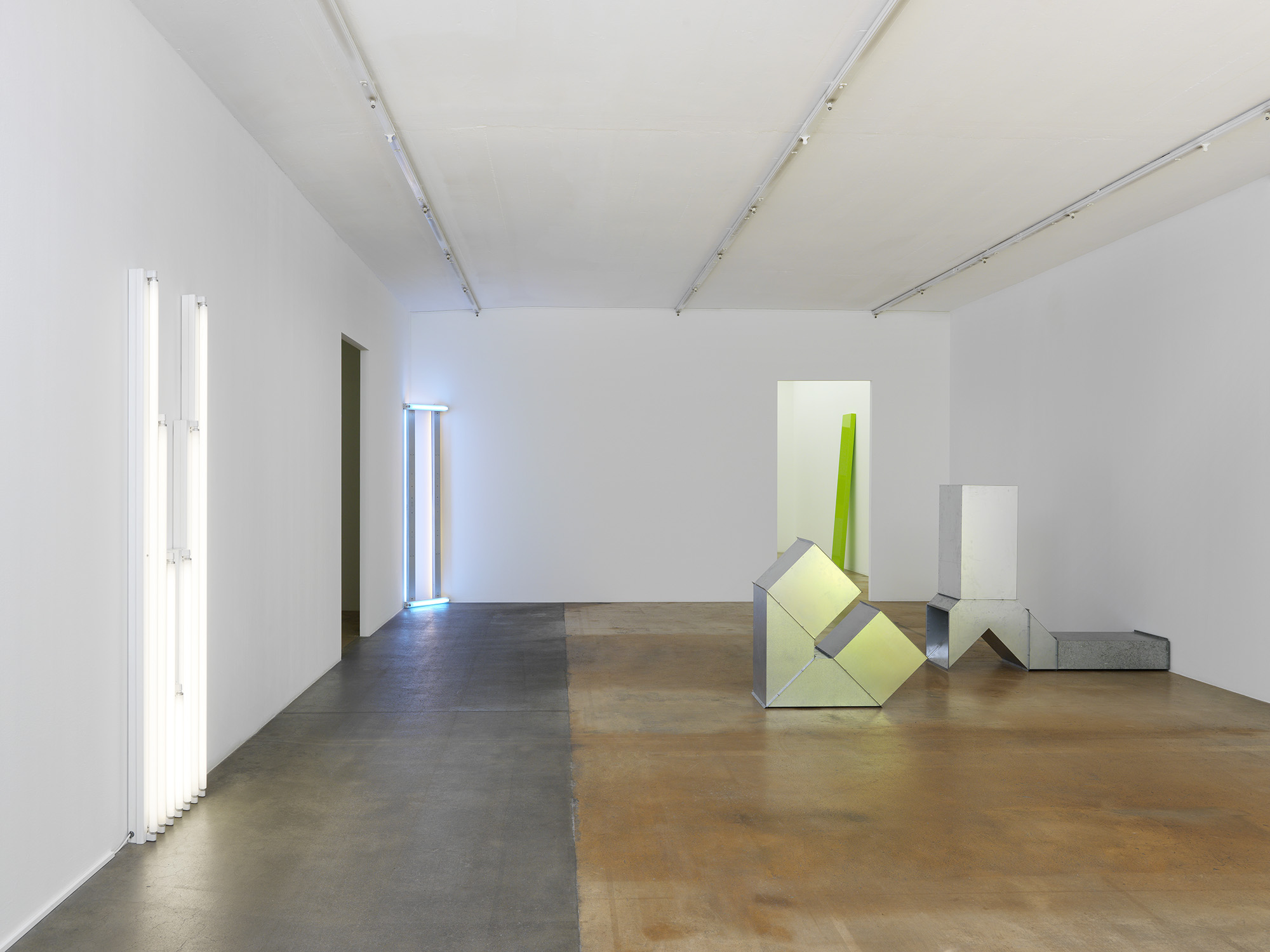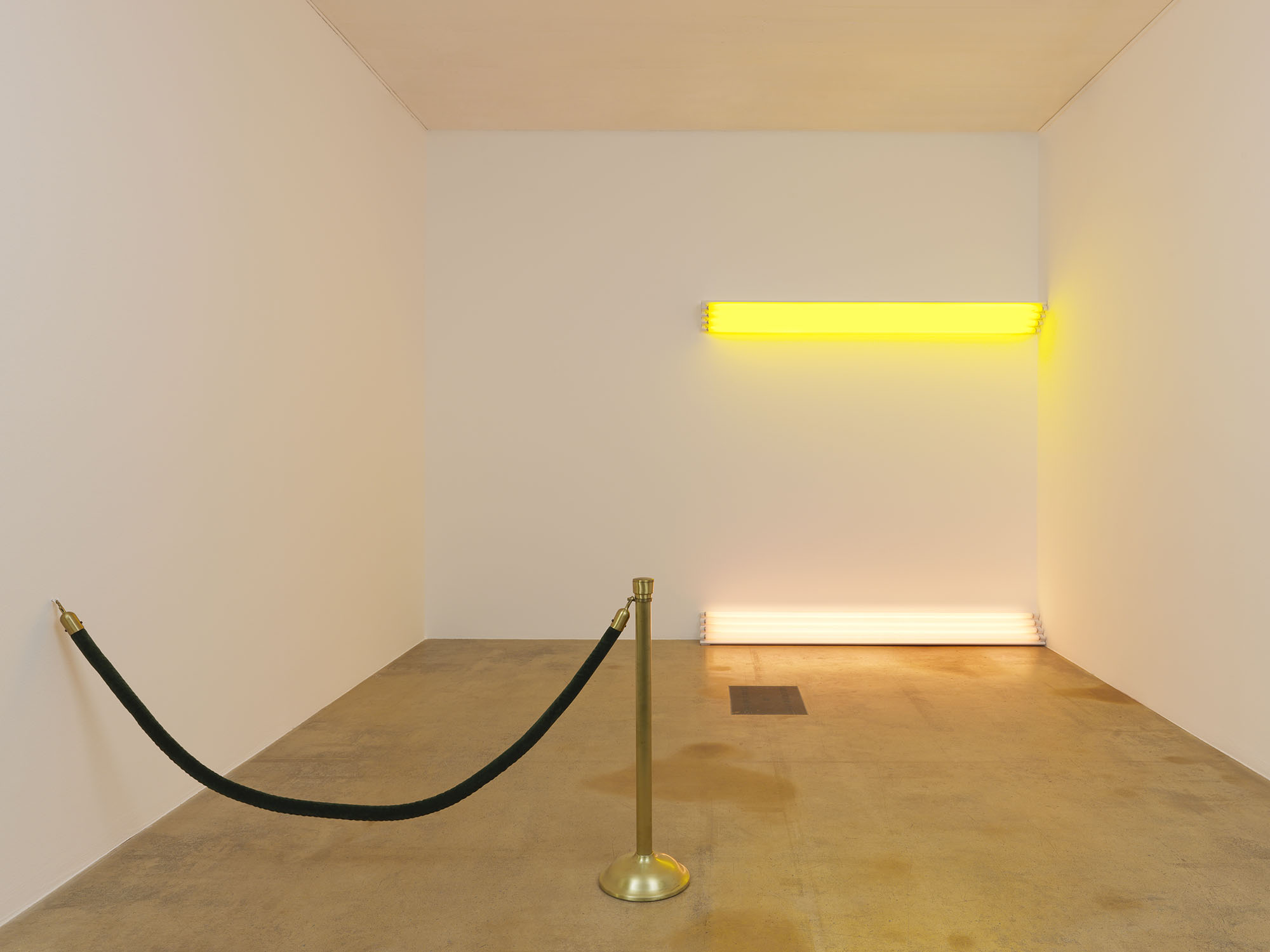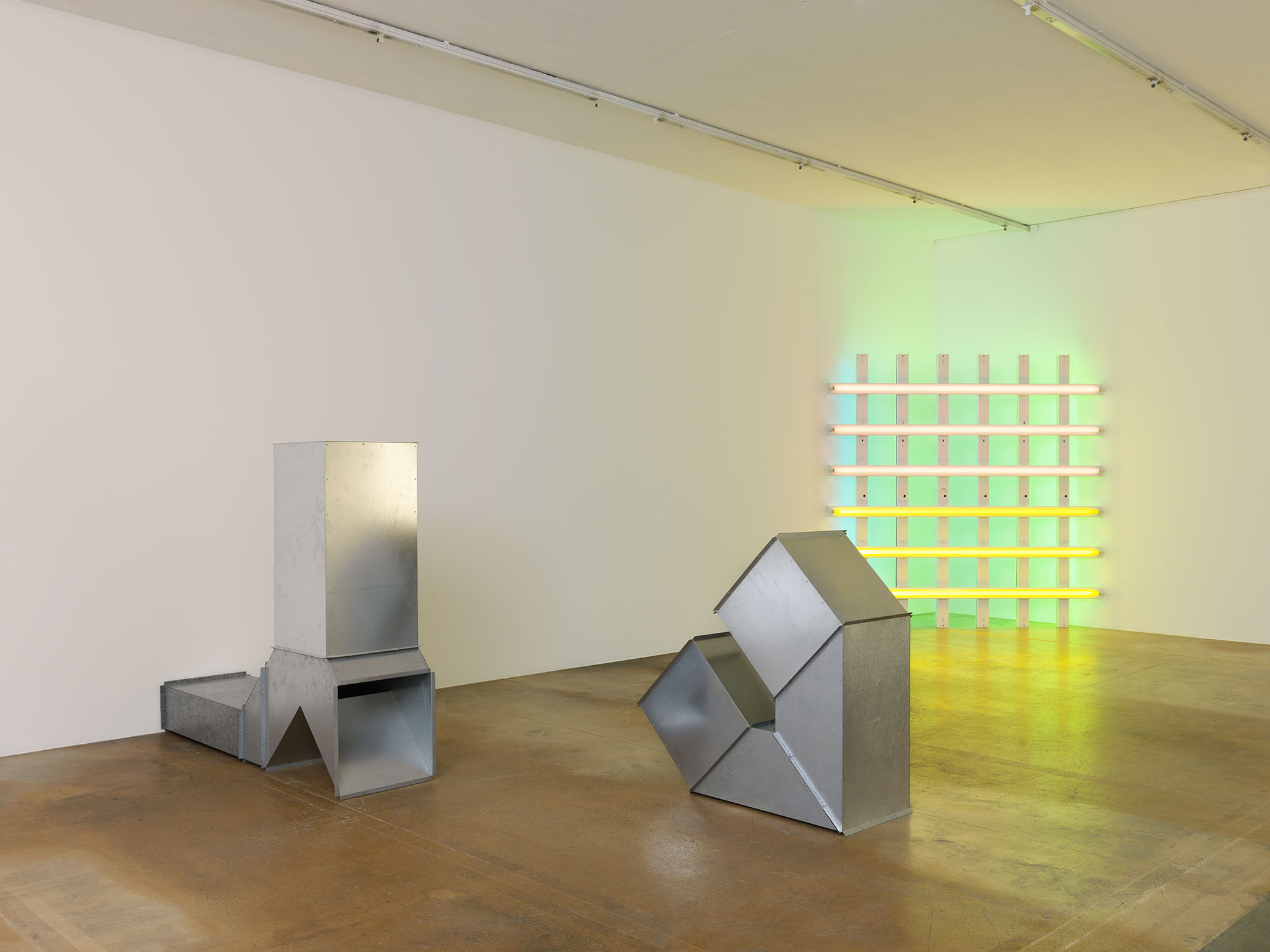In 1964, in his now-seminal article, Specific Objects, Donald Judd wrote: “Half or more of the best new work in the last few years has neither been painting nor sculpture.” While somehow writing a manifesto for his own work, Judd was also describing works which were later to be grouped together under the term Minimal art. The previous year, Dan Flavin (1933–1996) hung on the wall of his studio a single industrial fluorescent tube, which he entitled The Diagonal of May 25 (to Constantin Brancusi) dedicated to Brancusi’s Endless Column. This minimal, radical action, laid the foundations of his future work, set in a varied series of combinations using four modules of fluorescent tubes in nine colors.
The dedication of this work places it in a series of homages to historical or political events, to artists (Monuments for V. Tatlin), philosophers (Untitled, to Harold Joachim), and friends (Fondly to Margo).
Flavin’s most famous series, Monuments for Tatlin, stretched from 1964 to 1982. The works are generally organized around a principle of total symmetry, while respecting the proportional scale of the constituent parts. Most use fluorescent daylight or a cool white light. These “monuments” allude to the (unfinished) project for the Monument to the Third International commissioned by Lenin in 1920, in which Tatlin first viewed light as a material in its system of construction.
Flavin’s art, which was unclassifiable when it appeared on the New-York art scene, has been installed in unusual areas: in corners, corridors, or blocking visitors’ progression… It shows an installation mastery to such an extent that the artist did not want his work to survive him, considering that he alone was capable of installing it.
The light from the fluorescent tubes passes over the material limits of the object, sculpting space, wiping out the angles of the exhibition space, enveloping the spectators in its colored field, while keeping up an intimate dialogue with the architecture, for which several works have been especially conceived.
Since the end of the 20th century, Flavin’s work set a precedent, and luminous installations so widely present in contemporary art derive from the route he opened up between painting and sculpture.
- Exhibition organized by Lionel Bovier and made possible thanks to the long-term loans of works from the Mattioli-Rossi Foundation


